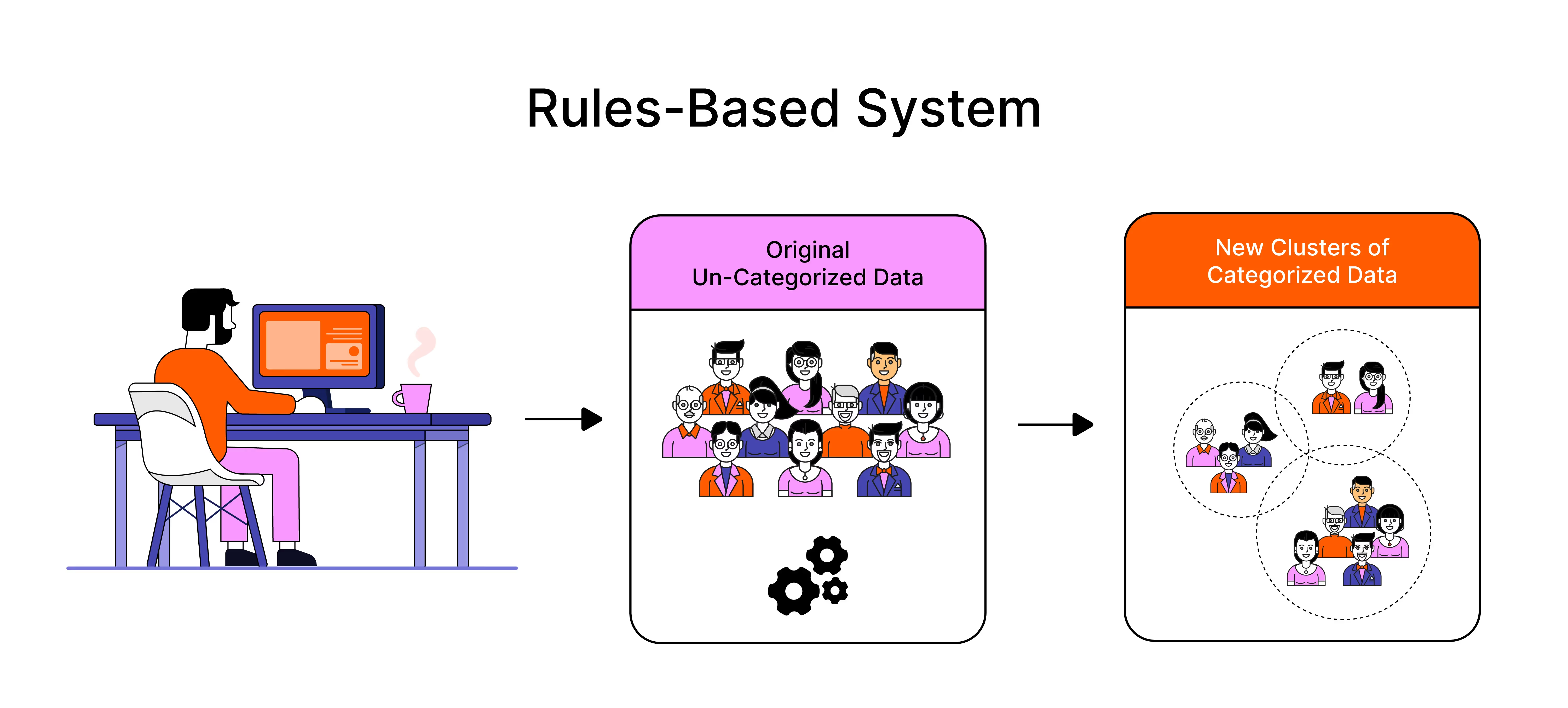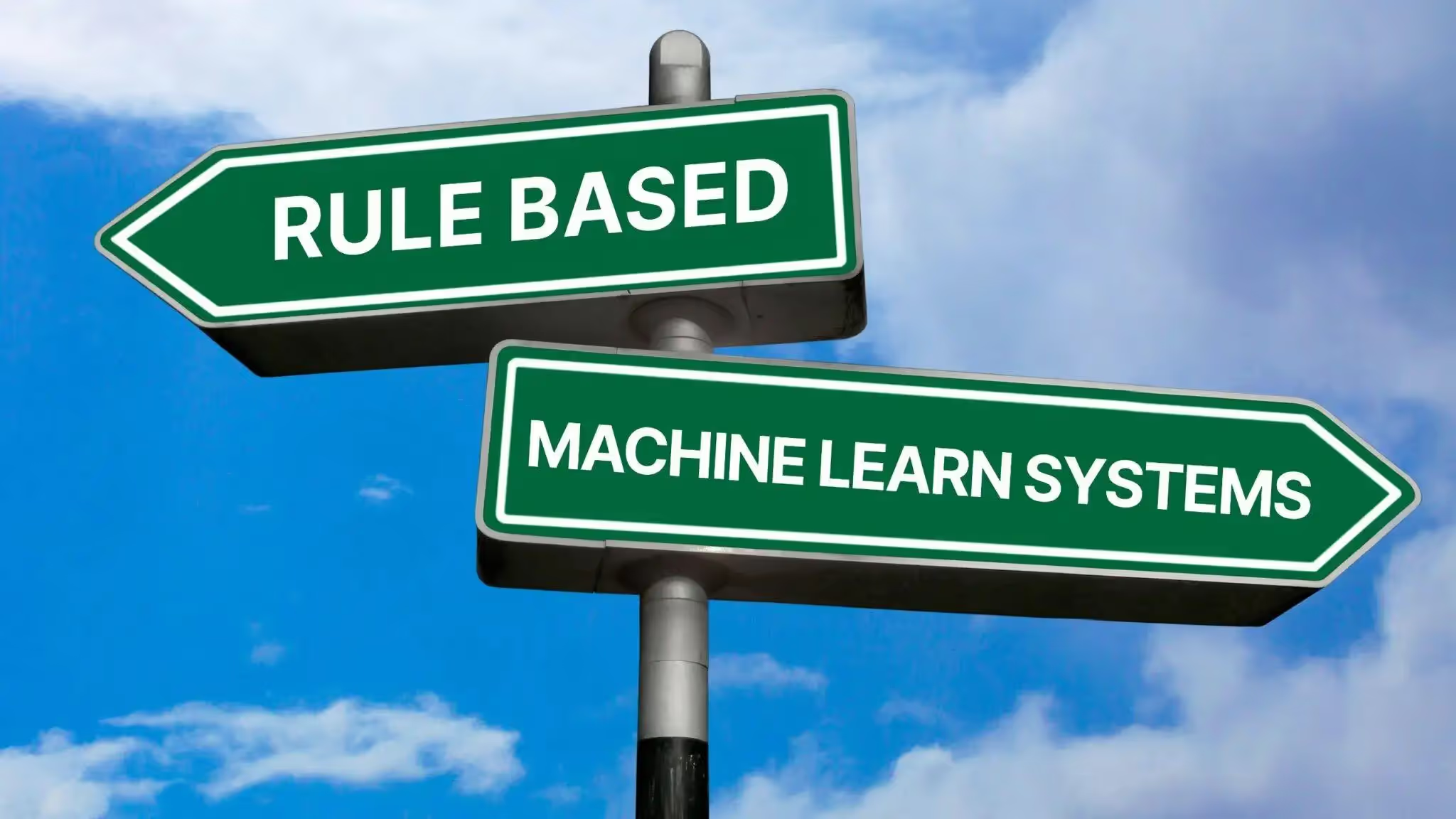
When it comes to machines and computers, they don't possess an innate understanding of the world, what is acceptable, or what is not. Like a child, machines must be taught everything from the ground up. Broadly speaking, there are two approaches to help machines gain intelligence, which is the rule-based approach and the machine learning approach.
What is a rule-based system?
A rule-based decision system makes decisions based on a set of predefined rules and logic. In this approach, human experts or domain specialists explicitly encode rules into the system, dictating how it should respond to different input scenarios. These rules are typically in the form of "if-then" statements, where specific conditions (the "if" part) are followed by corresponding actions or decisions (the "then" part).

The decision-making process in a rule-based system is deterministic and follows a fixed set of rules. When an input or situation matches the conditions specified in the rules, the system applies the corresponding action without any further learning or adaptation. The rules are typically designed to cover a specific range of situations or decision-making scenarios.
Rule-based decision systems are commonly used in various domains, including expert systems, business applications, medical diagnosis, process control, and decision support systems. They offer the advantage of transparency and interpretability since the decision logic is explicitly defined by human experts. Additionally, rule-based systems can be easier to design and implement in scenarios where the decision rules are well-understood and static.
The limitations of a rule-based system
However, rule-based systems also have limitations. They may struggle with handling complex or ambiguous situations that do not fit neatly into predefined rules. As the number of rules grows, managing and maintaining the system can become challenging. Furthermore, rule-based systems lack the ability to learn from new data or adapt to changing conditions, making them less suitable for dynamic environments.
For example, a rule-based system will flag all users as suspicious if they deviate from the pattern of normal goods they typically buy, even though that alone is not a guaranteed indicator of fraud. Though rule-based fraud detection empowers fraud analysts to make changes immediately and as frequently as needed, it can also make the process cumbersome and unwieldy after a certain number of rules have been added. Predictably, these rules based on ‘And/Or’ principles can result in false positives or false negatives, if an exception is overlooked. To accurately identify fraud, a system must study and understand the buying behavior of customers by combining purchase data with other indicators to build a complete picture.
What is a machine learning based system?
Machine learning is a subset of AI that focuses on the development of algorithms and models that enable machines to learn from data and make predictions or decisions without explicit programming. Instead of relying on predefined rules, machine learning models use statistical techniques to learn from the data they have been trained on to new, unseen situations.
Continuing on our example of fraud detection, the archaic rule-based investigation sees a pattern of the same account being accessed by different internet protocol addresses over a short duration, and flags that as suspicious. Whereas a Machine Learning-equipped fraud detection can learn the difference between true fraud and misleading situations. AI systems fed with the data on legitimate customers can look at each situation more closely and identify that the user is a business traveler who is buying gifts for his family while on the road. It might be able to recognize that some of the IP addresses are coming from Wi-Fi networks of the places he is traveling and use device geolocation to understand that the user was at those places.

RULES ARE FORMED WITH THE THINGS WE KNOW; MACHINE LEARNING REVEALS THINGS WE DON’T KNOW.
What is the difference between rule-based and ML systems?
.avif)
In summary, AI leverages machine learning and other techniques to enable machines to learn from data, adapt, and make decisions. Rule-based decision systems, on the other hand, rely on predefined rules set by human experts and lack the learning and adaptability capabilities of AI systems.
While there is much promise in Machine Learning, there are also decisions that need to be made. The decision to use either approach depends on various factors, such as the availability and quality of data, the complexity and dynamics of the decision-making environment, the need for transparency, the resources available for training and maintenance, and the level of interpretability required.
- If the data is abundant, and the decision-making process is complex and dynamic, the machine learning approach may be a better fit.
- If the decision-making process is well-defined, and interpretability and control are crucial, the rule-based approach might be more suitable.
As you can see, there are two different approaches to decision making: rule-based systems and machine learning systems. The decision of which approach to use depends on the specific needs of your application. However, no matter which approach you choose, you can be sure that AI-based decision making can help you improve your business.
In the meantime, forward-thinking businesses are enjoying the many benefits of applying AI such as increased efficiency, improved decision-making, and reduced costs. RapidCanvas no-code AutoAI is a powerful tool that can help you quickly and easily implement AI in your business.
Would you like to learn more about how RapidCanvas no-code AutoAI works? Connect with us to know more.









